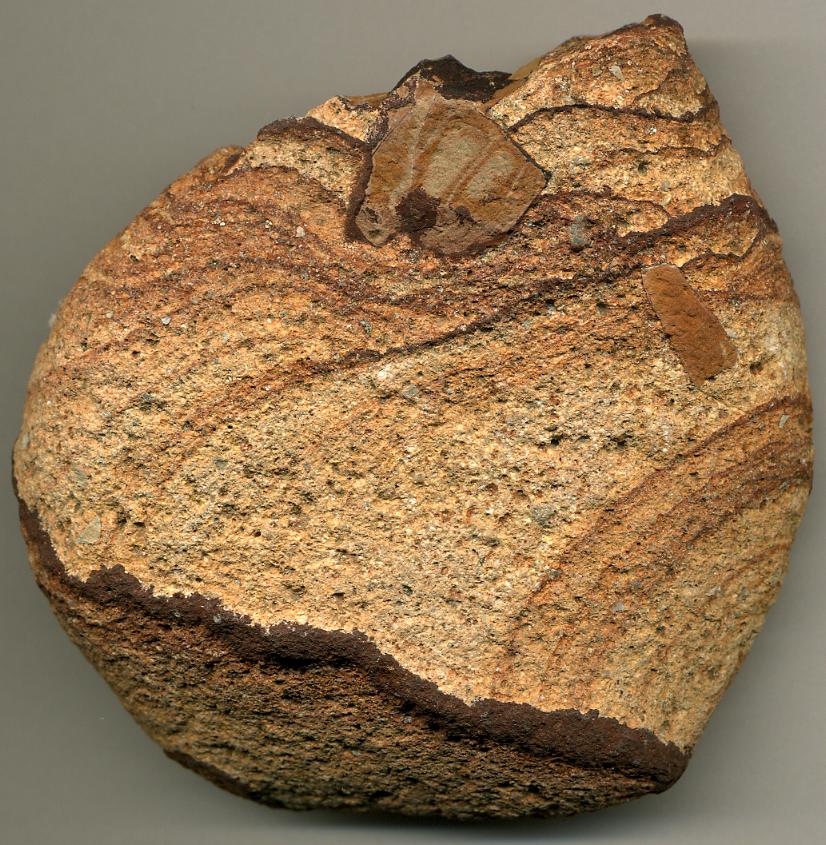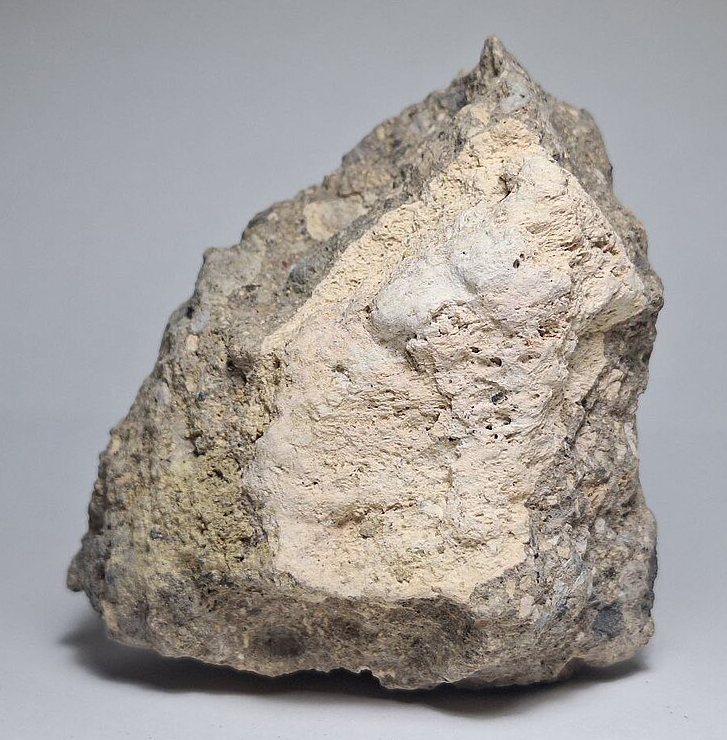Tuff
Volcanoes are the source of many types of rock, such as basalt, obsidian, pumice, and tuff. The igneous rock tuff is mostly made up of ash but also often includes small chunks of rock or blobs of lava, or larger chunks/blobs, all of which shoot out of the volcano when it’s erupting. All this material piles up where it lands, and if it’s hot enough it’ll fuse together and form rock in a pretty igneous way right away. If it’s not hot enough, it might turn into rock in a way that’s more sedimentary. That is, it’ll form layer after layer, slowly compressing itself and fusing together into rock over years and years. Because it’s made of ash, tuff is softer and more lightweight than rocks like basalt or obsidian, but it’s often strong enough that it can be used as a building material. In fact, the ancient Romans used tuff to build many of their walls and other structures. In a related story, the ancient residents of Pompeii were not so lucky as the Romans. When Mt. Vesuvius erupted violently in the year 79, it threw a huge amount of ash, toxic gas, and rock into the air, and unimaginable amounts of that material fell on nearby towns such as Pompeii. So rather than benefiting from tuff as a construction material, Pompeii and many of its people were basically turned into tuff by a layer of ash up to 20 feet deep.
| Formula | Group or Type | Shape | Hardness | Specific Gravity | Streak | Luster |
|---|---|---|---|---|---|---|
| — | — | — | 3–6 | 1.4–2.7 | — | — |

